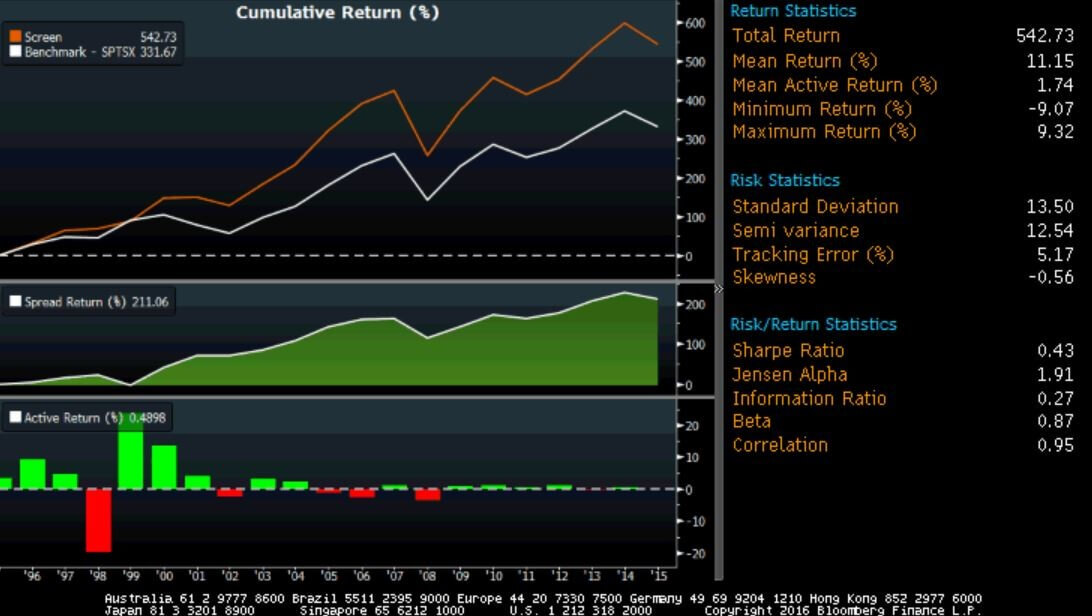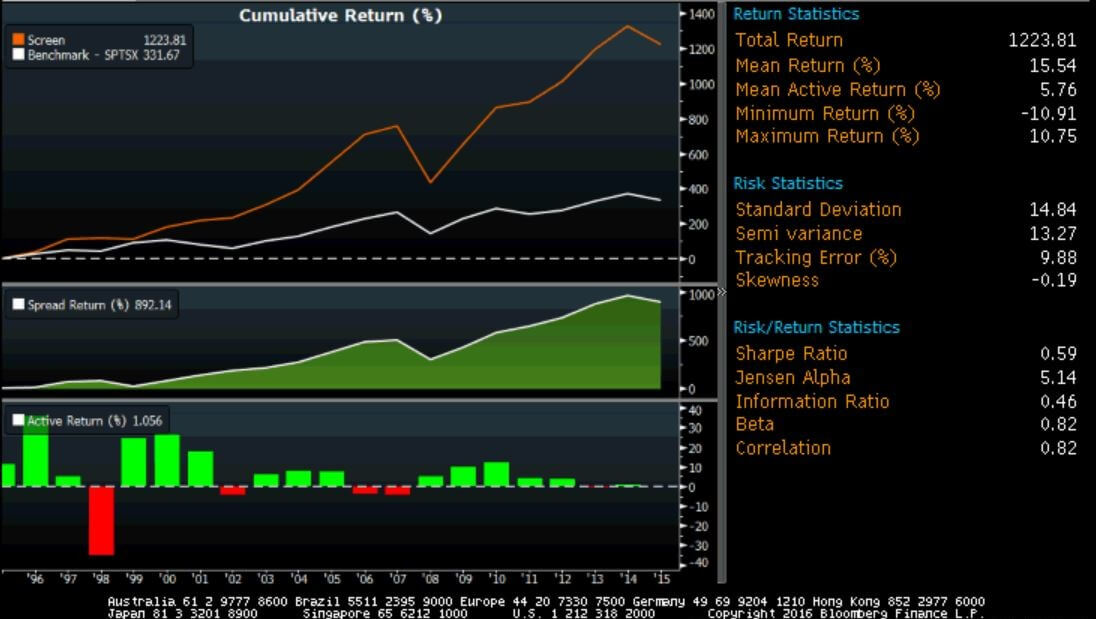Boost returns with low P/E stocks
Buying stocks with lots of earnings at a low price is a simple—and profitable—concept
Advertisement
Buying stocks with lots of earnings at a low price is a simple—and profitable—concept
 The baseline portfolio had an average compound annual return of 9.75% over the 20 years while the S&P/TSX Composite index gained 7.59% annually over the same period. The lower return for the index is attributable to the different universe of stocks used for the backtest.
As an aside, compound annual returns, which represent the gains achieved by buy-and-hold investors, are lower than mean (or average) annual returns for volatile portfolios. For instance, a portfolio that climbs 20.0% one year and 4.0% the following year has a mean annual return of (20.0%+4.0%)/2 or 12.0%. Its compound annual return is (1.20*1.04)^(1/2)-1 or 11.7%. I make a point of presenting compound annual returns, unless stated otherwise, because they are both lower and more reflective of investor returns.
With the baseline in hand, we can now consider the impact of buying stocks with positive P/E ratios of less than 14 while maintaining all of the other requirements of the baseline portfolio. The results are shown below.
The baseline portfolio had an average compound annual return of 9.75% over the 20 years while the S&P/TSX Composite index gained 7.59% annually over the same period. The lower return for the index is attributable to the different universe of stocks used for the backtest.
As an aside, compound annual returns, which represent the gains achieved by buy-and-hold investors, are lower than mean (or average) annual returns for volatile portfolios. For instance, a portfolio that climbs 20.0% one year and 4.0% the following year has a mean annual return of (20.0%+4.0%)/2 or 12.0%. Its compound annual return is (1.20*1.04)^(1/2)-1 or 11.7%. I make a point of presenting compound annual returns, unless stated otherwise, because they are both lower and more reflective of investor returns.
With the baseline in hand, we can now consider the impact of buying stocks with positive P/E ratios of less than 14 while maintaining all of the other requirements of the baseline portfolio. The results are shown below.
 You can see that adding the low-P/E requirement boosted returns in a big way. The low-P/E portfolio generated compound average annual returns of 13.79%, which is just over four percentage points more than the annual compound return of the baseline portfolio.
Buying stocks with lots of earnings at a low price is a simple concept. But, as Charlie Munger observed, one should take a simple idea seriously. After all, it can be quite profitable.
You can see that adding the low-P/E requirement boosted returns in a big way. The low-P/E portfolio generated compound average annual returns of 13.79%, which is just over four percentage points more than the annual compound return of the baseline portfolio.
Buying stocks with lots of earnings at a low price is a simple concept. But, as Charlie Munger observed, one should take a simple idea seriously. After all, it can be quite profitable.
| Name | Price | P/B | P/E | Earnings Yield | Dividend Yield |
|---|---|---|---|---|---|
| Power (POW) | $27.40 | 1.04 | 11.2 | 8.93% | 4.89% |
| CIBC (CM) | $103.74 | 1.9 | 10.04 | 9.96% | 4.67% |
| National Bank (NA) | $47.37 | 1.67 | 13.61 | 7.35% | 4.64% |
| Shaw (SJR.B) | $26.23 | 2.13 | 9.5 | 10.52% | 4.52% |
| BCE (BCE) | $61.78 | 4.32 | 19.55 | 5.11% | 4.42% |
| Emera (EMA) | $48.16 | 2.03 | 14.85 | 6.73% | 4.34% |
| TELUS (T) | $43.79 | 3.21 | 18.32 | 5.46% | 4.20% |
| Bank of Nova Scotia (BNS) | $70.62 | 1.68 | 12.41 | 8.06% | 4.19% |
| Royal Bank (RY) | $81.60 | 1.94 | 11.86 | 8.43% | 4.07% |
| Sun Life Financial (SLF) | $40.70 | 1.34 | 12.22 | 8.18% | 3.98% |
Share this article Share on Facebook Share on Twitter Share on Linkedin Share on Reddit Share on Email